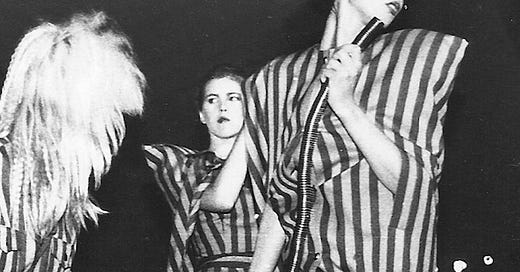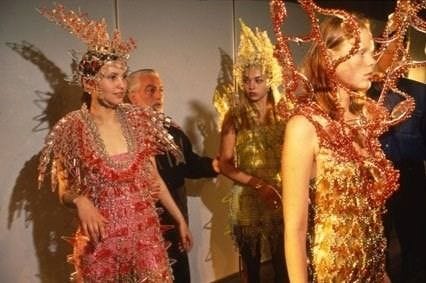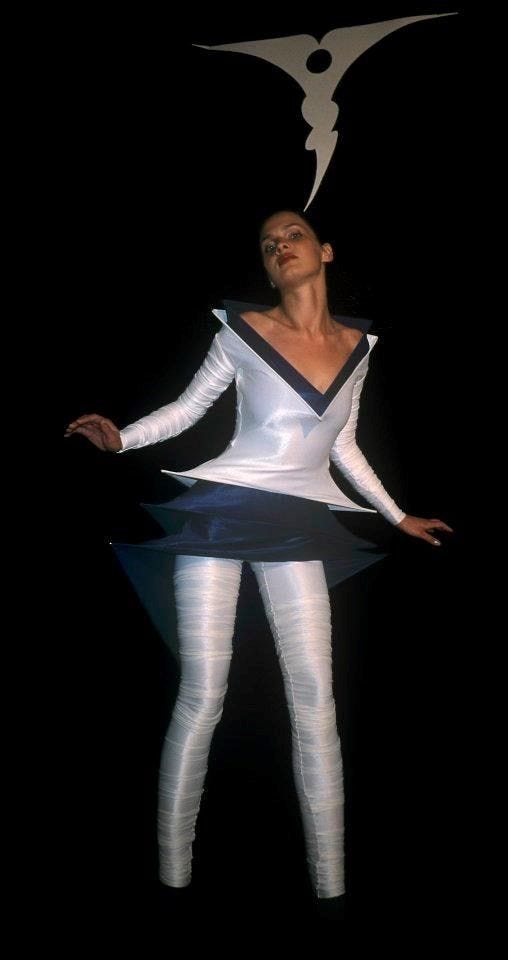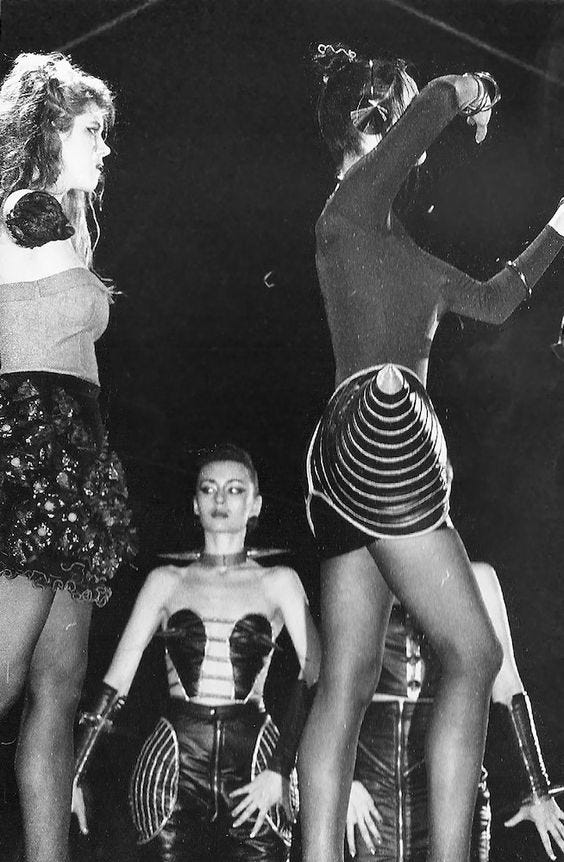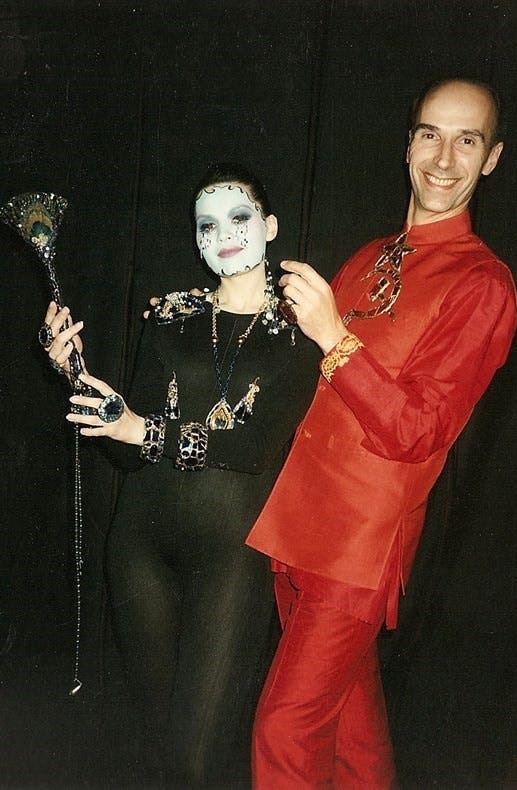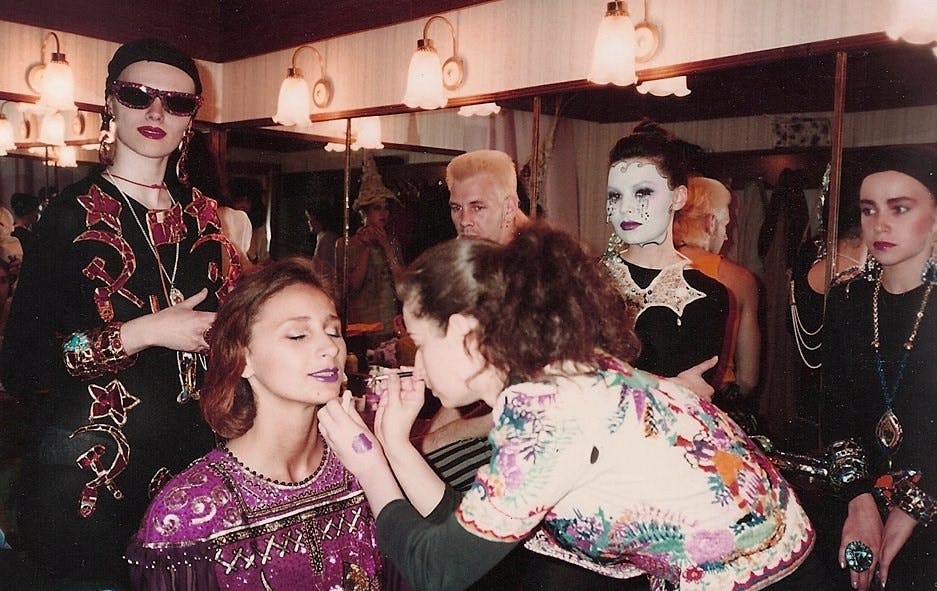The Untamed Fashion Assembly
“I think there are three main ways to tame people’s minds. The first is religion, the second is education, and the third and the most powerful one is money. At the end of the eighties all these three stopped working and this is how it became possible to organise a public event like the Untamed Fashion Assembly.” -Bruno Birmanis
Untamed Fashion Assembly was a seven-day fashion event in the form of conceptual presentations and performances celebrating the avant-garde based in Riga, Latvia. The event drew designers from across the globe. The Assembly’s launch in 1990 took place mere months before Latvia attained total independence from the Soviet Union. Due to the extreme turmoil of the period, the Assembly unfolded under conditions of material deprivation and authoritarian suppression, in the shadow of Russian troops and tanks.
Due to the pronounced limitations of the period, it cannot be overstated just how much ingenuity, patience and drive it took to bring this event to life. After all, in 1990 Latvia, it was not just textiles and sewing machines that were difficult to get a hold of, but, very often, also basic everyday items. Ironically, it appears that the breakdown of the economy at the time of the project’s inception encouraged – or even liberated – designers to disentangle their experimental approaches from conventional commercial concerns, as the pieces they presented were not conceived in a horizon of commercial exchange. Designers had to make up for the want of material means with extreme creativity. For instance, Joseph Statkevicius, a participating designer, used the little funds he managed to acquire from a sponsor in order to buy a duvet, cushions and a carpet for his recent unfurnished flat, and turned those into the garments for his collections.
The Soviet fashion industry can’t be briefly summarised without generalisations as it exhibited different imperatives over its decades-long life. However, it has to be noted that certain conditions remained relatively constant. The Soviet fashion industry was more-or-less centrally planned, that is, production and distribution were controlled in varying degrees by the state, it conformed and evolved in relation to the Cold War antagonisms between West and East, and was subject to the material conditions of the Soviet economy. These constants can be seen to trickle down to a skepticism towards catering for individualistic aesthetics, which could be interpreted as symptoms of western “bourgeois decadence,” as well as a material inability to standardise the production and distribution of uniformly high-quality clothing across the many millions of Soviet citizens. The latter was often compensated among the more affluent Soviets who could afford to have things made to order to their specifications by a designer/dressmaker. To the western eye, these objective challenges can easily come across as signs of an old fashioned and dysfunctional infrastructure whose production was of lower quality than its western counterparts.
Untamed Fashion Assembly was the brainchild of Bruno Birmanis, and it grew out of one of the first alternative fashion performances in the USSR, “The Ball of Postbanalism.” Birmanis, alongside Ugis Rukitis, worked on “The Ball of Postbanalism” between 1987 and 1989. The Ball was an hour and a half long performance and included more than 150 costumes, which they toured across Europe.
Birmanis’s first Fashion Assembly took place in 1990, just 20 days after Latvia declared the restoration of its independence (gaining full independence the following year). With a team of three, Birmanis prepared the first assembly within half a year. As he later reflected: “it was risky, but when you are a child you just do it”. The Assembly had no state funding; according to Birmanis, it was funded by friends, family and, surprisingly, “mafiosi.”
To be part of the assembly the only requirement was that the collections presented were as far away from “commercial” as possible. Birmanis was looking for “free feeling and free creation from free designers.” As he explained, “there was a sense of freedom in the air at the time, and while we were poor, we were young and hungry. Which is a very good background for creativity.” The assembly was very DIY and notoriously chaotic. The sculptor and jewellery designer Andrew Logan recollected: “It was hell when you were there. No one ever turned up on time, nothing happened when it was supposed to. But there was a wonderful joy to life there, somehow.”
A few well-known designers such as Zandra Rhodes, Red or Dead’s Wayne Hemingway, and Paco Rabanne also took part in the Assembly. It is rumoured that Alexander McQueen attended the Assembly in the mid-90s, as his name appeared on a register of Central Saint Martins students who attended the event.
In 1999, the Untamed Fashion Assembly drew to a close. Unsurprisingly, the reason for its demise was financial. Organising and running such a large alternative event without a stable source of funding and little commercial prospects proved very difficult in the long run. Birmanis also found that individual sponsors were systematically attempting to force changes which distorted the character and spirit of the event, turning it into a money-making venture. Notably, in the mid-90s, the organisers of the Smirnoff Awards offered to buy the entire event but were turned down.
Birmanis’s romantic refusal to surrender to the logic of commerciality should not be understood as a mere reflection of the original DIY ethos of the event, but, interestingly, also alludes to the designer’s own conception of fashion and its relation to fine art. Historically, it has been the latter whose modern conception has been identified with this resistance against the world of transaction - as a space free from the contamination of commercial exchange. In this light, the fashion objects of the Untamed Fashion Assembly reveal themselves as body-orientated art pieces. After all, the relation between fashion and art appears to have been a persistent concern for Birmanis, who citing Jean Cocteau, asserted:
“Art produces ugly things which frequently become more beautiful with time. Fashion, on the other hand, produces beautiful things which always become ugly with time.“
References and further reading
BBC Clothes Show, Untamed Fashion Assembly 1990
The Ball of Post Banality, Riga 1989
The Untamed Fashion Assembly, Directed by Harry Stein, 1992
An interview with Bruno Birmanis - https://easteast.world/posts/209
https://www.dazeddigital.com/fashion/article/40887/1/radical-fashion-festival-90s-latvia-post-soviet-style-eastern-europe

